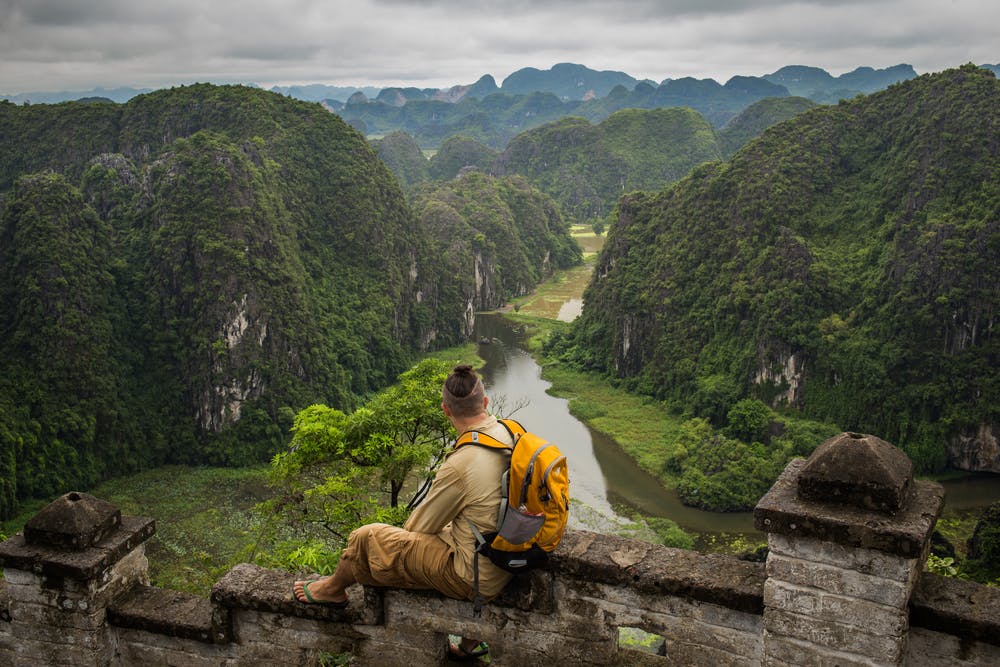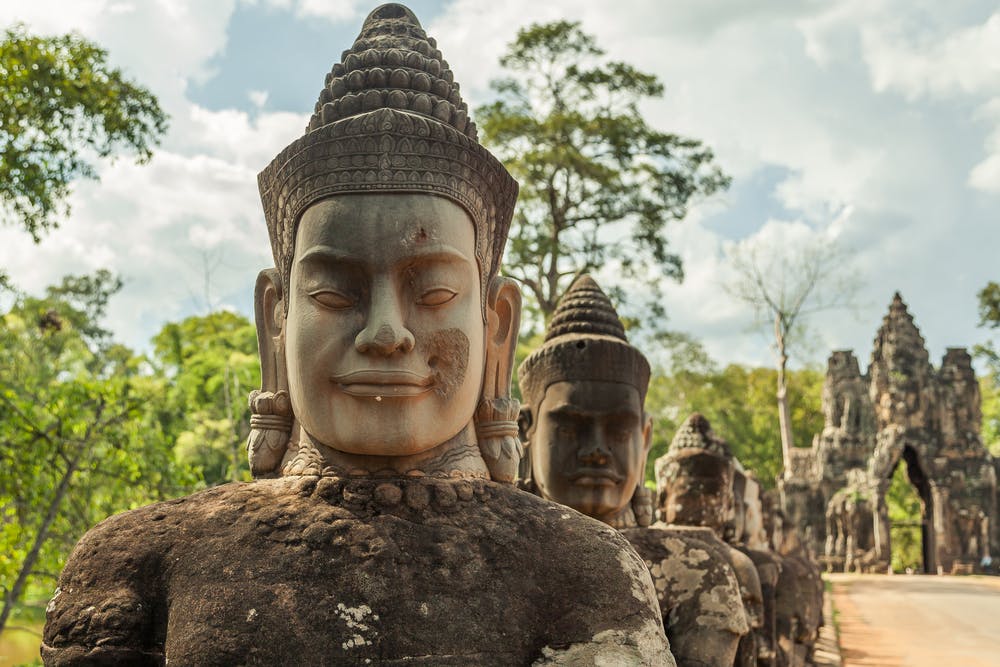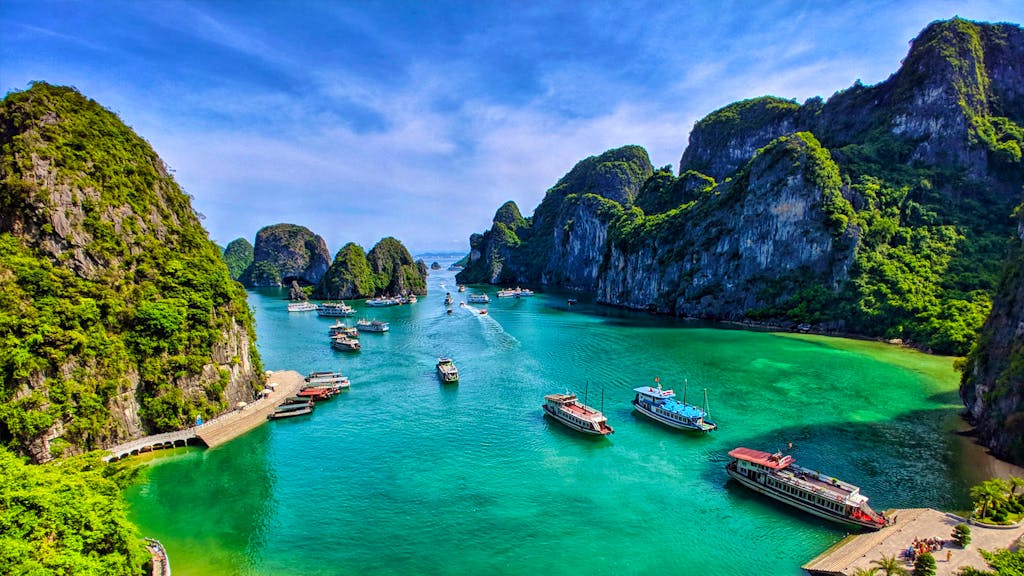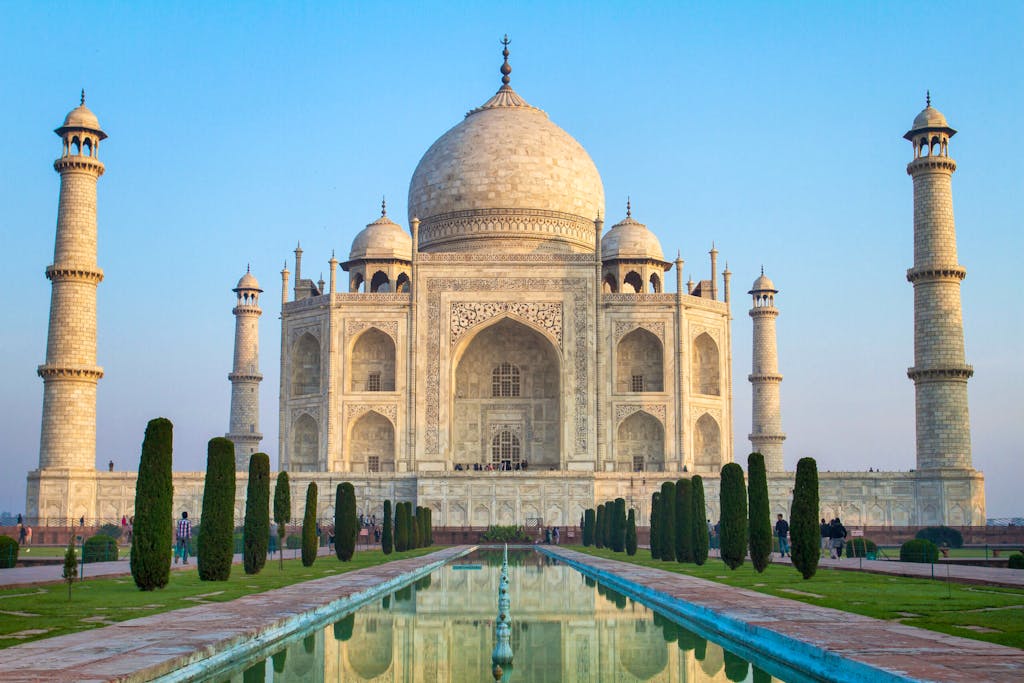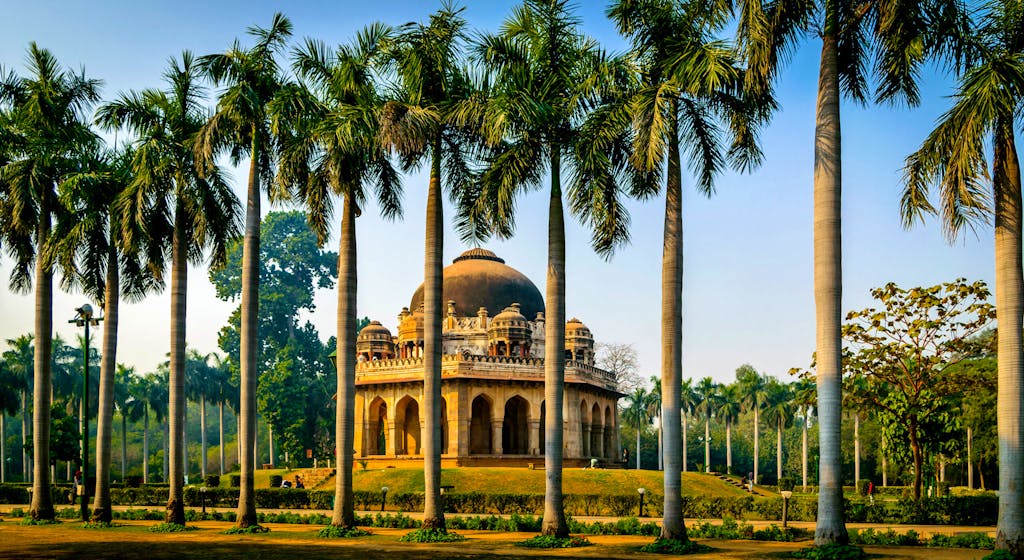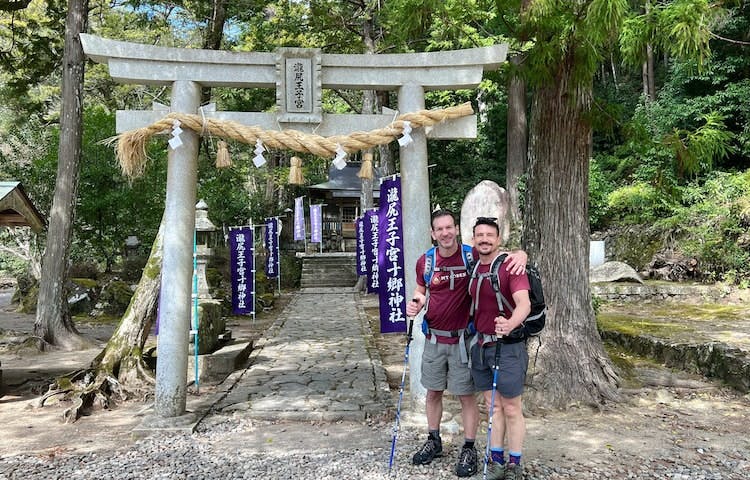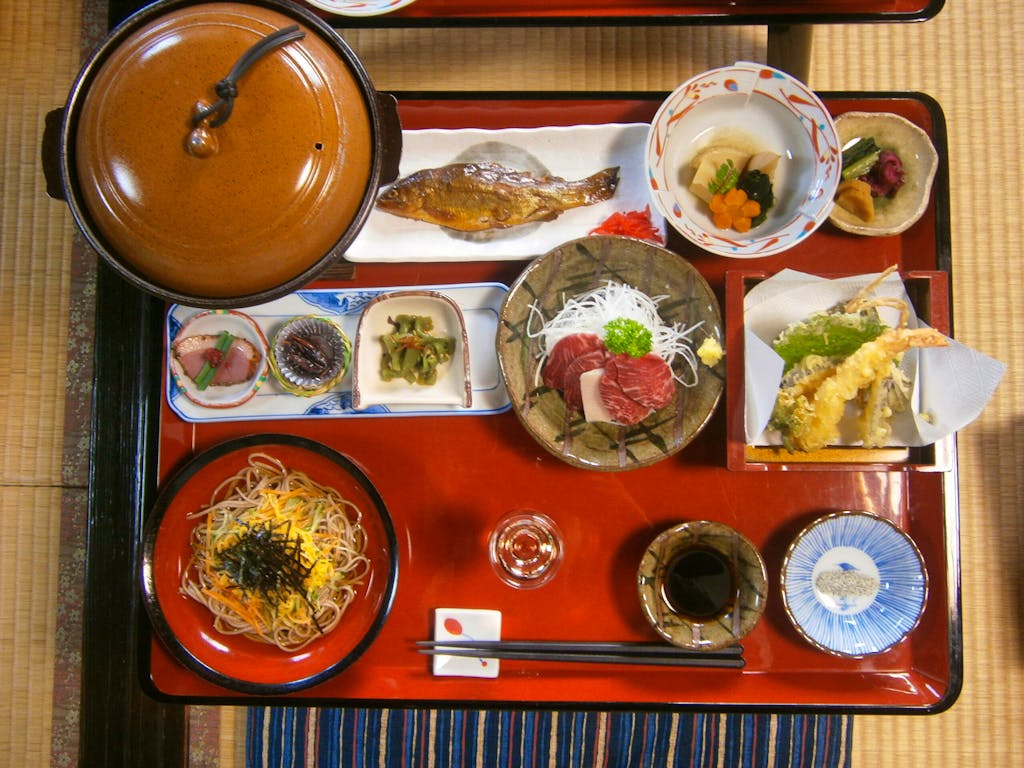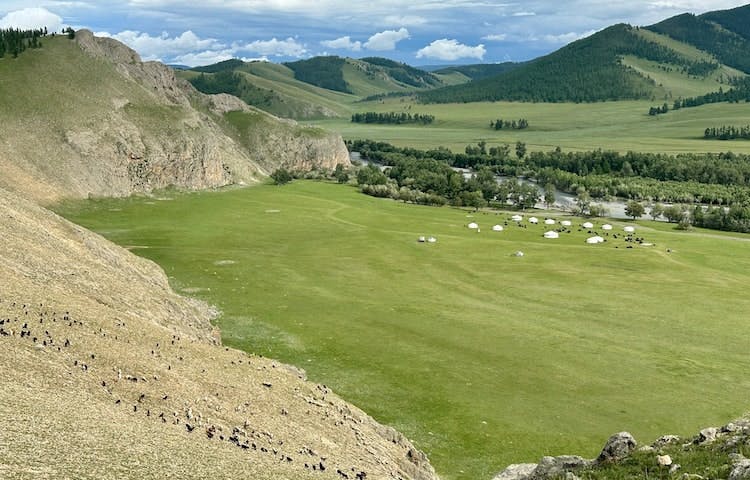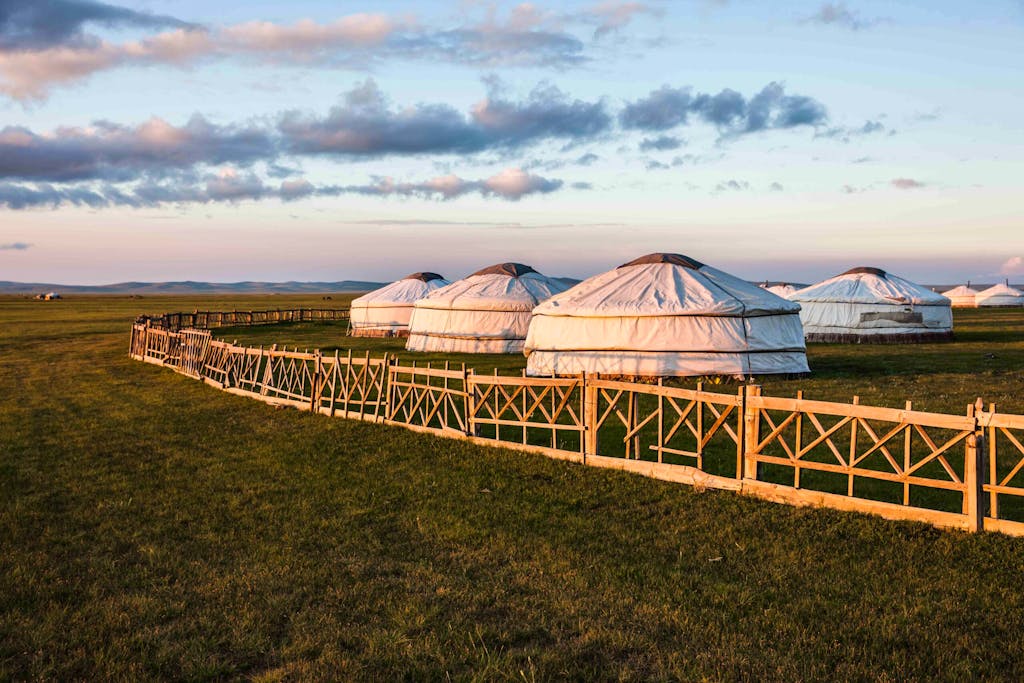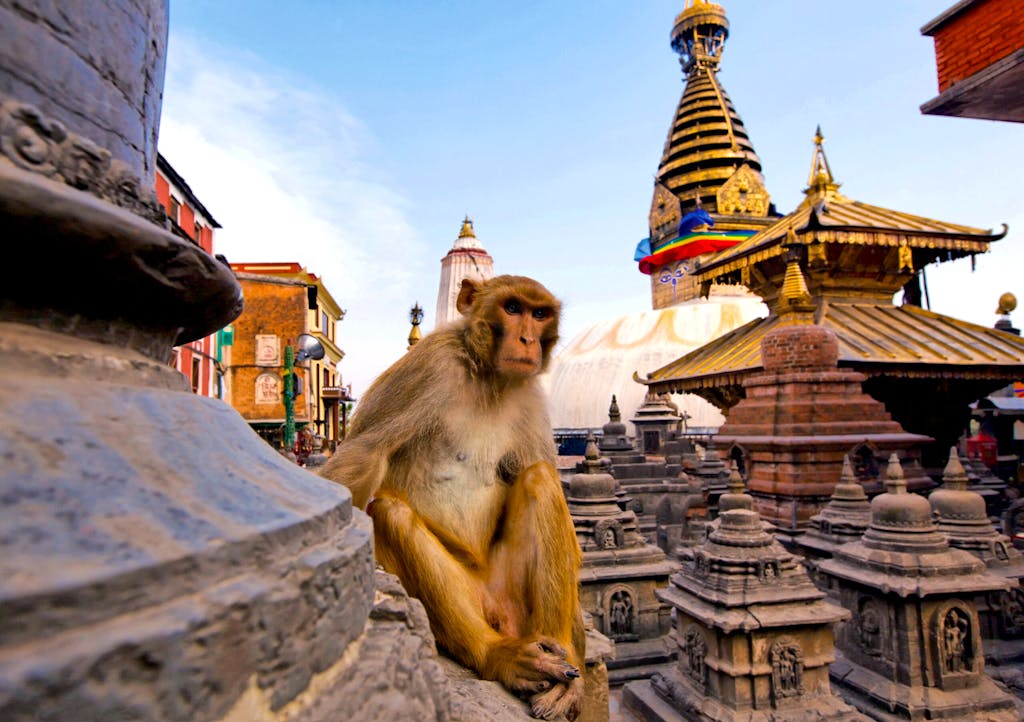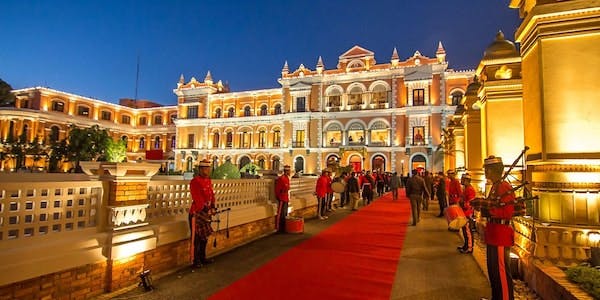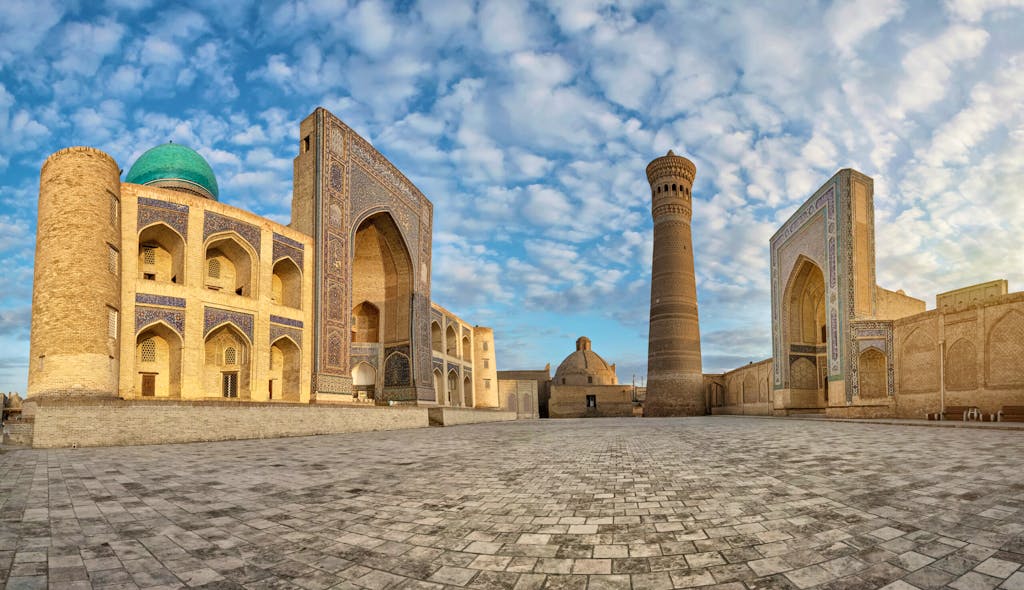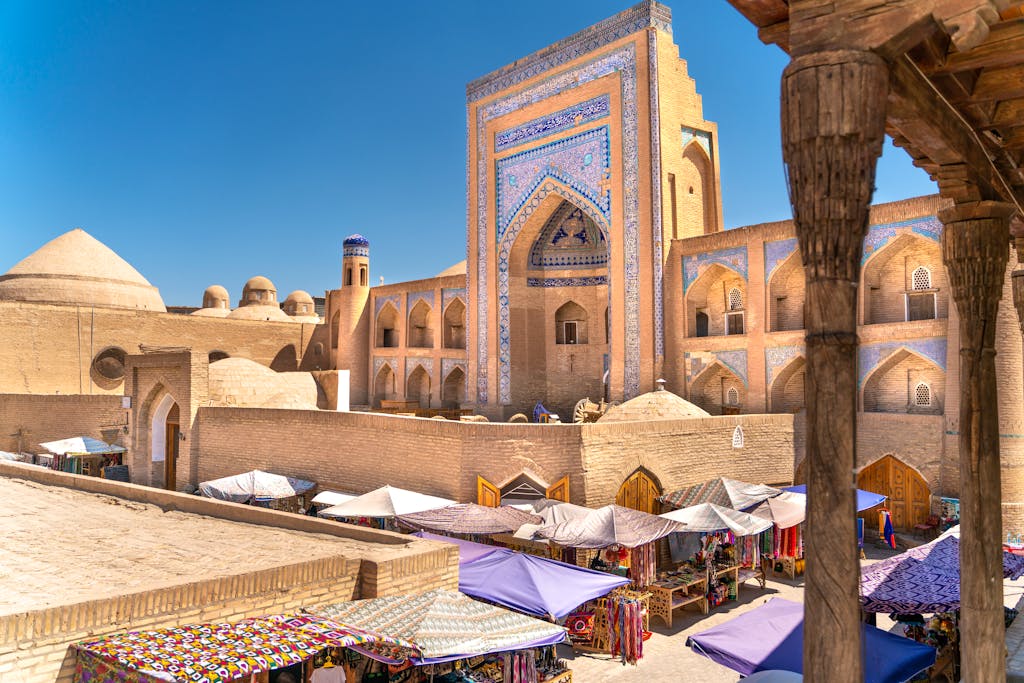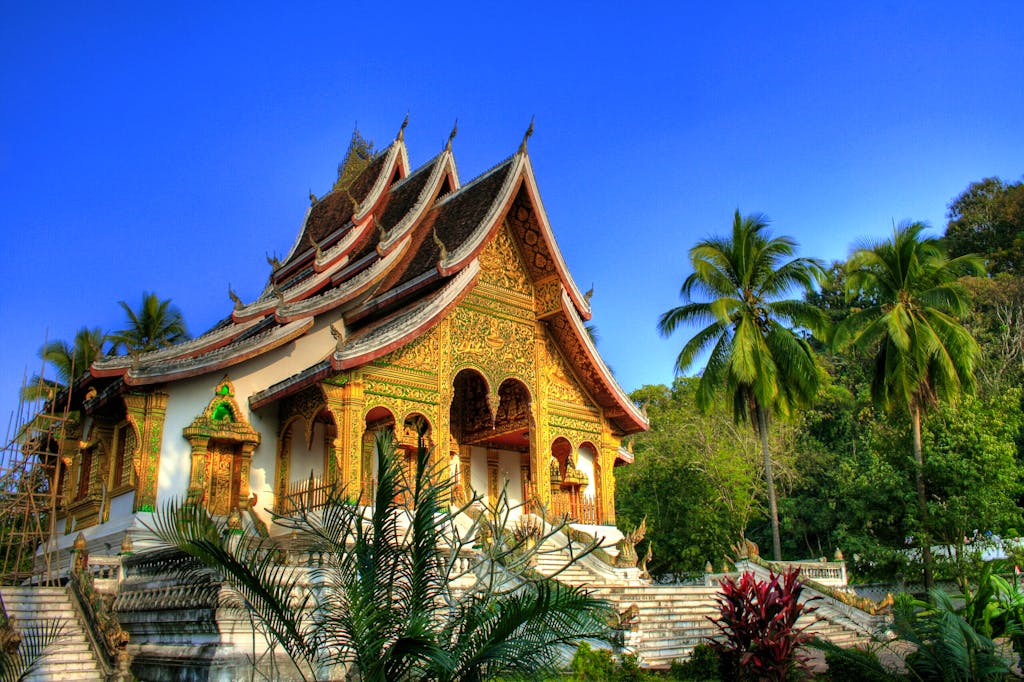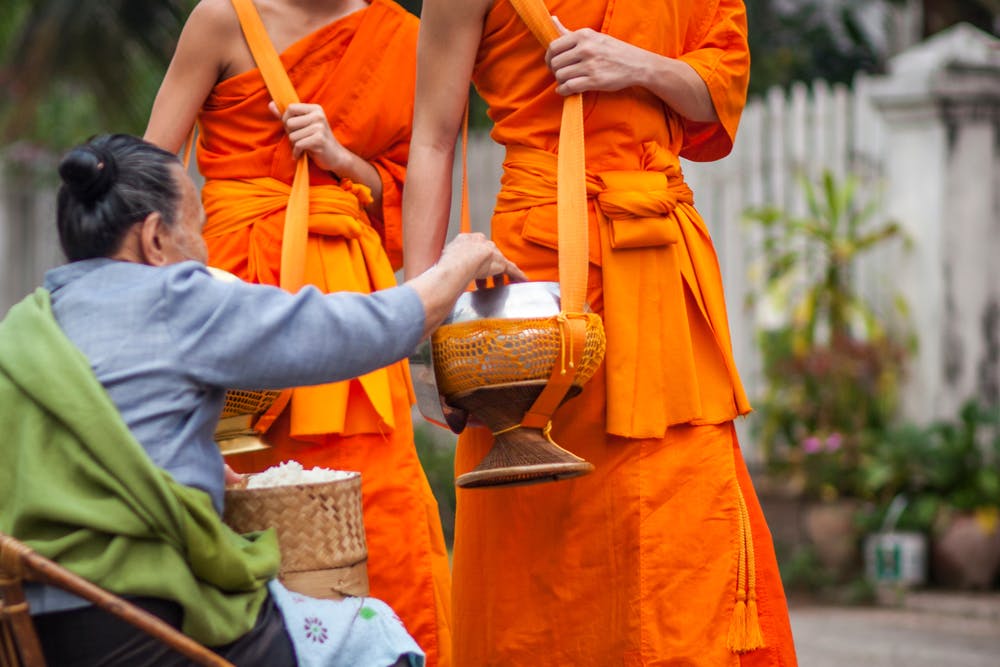Asia offers a wealth of compelling destinations to visit. From the maze of 12th century temples at Angkor Wat to the remote Orkhon Valley in Mongolia, the Asian continent has it all. So how do you choose from the never-ending list of sensational destinations?
We recommend starting with Asia’s UNESCO World Heritage sites.
UNESCO World Heritage Sites are destinations that have been internationally recognized as places of outstanding global value. In order to achieve UNESCO World Heritage status, sites must meet at least one of ten criteria including “represent[ing] a masterpiece of human creative genius” or containing “areas of exceptional natural beauty.”
To visit one of Asia’s heritage sites, you’ll need an adventurous-spirit and a little inspiration. Below, you’ll find our rundown of the 9 best UNESCO World Heritage Sites to visit in Asia.
Overview
- Angkor Wat, Cambodia
- Ha Long Bay, Vietnam
- Taj Mahal, India
- Humayun’s Tomb
- Kumano Kodo Pilgrimage Trail, Japan
- Orkhon Valley, Mongolia
- Kathmandu Valley, Nepal
- Bukhara’s Mosques, Uzbekistan
- Luang Prabang, Laos
9 Best UNESCO World Heritage Sites in Asia
1. Angkor Wat, Cambodia
Find Angkor Wat on Google Maps
There’s nothing modest about Angkor Wat. Once the seat of the powerful Khmer Empire, this must-see temple complex is a popular tourist destination in South East Asia (and for good reason). The main attraction in Angkor Archeological Park is (of course) Angkor Wat itself. This temple is devoted to the Hindu god, Vishnu, and is honored as the largest religious monument on the planet.
Other attractions in this jungle-swallowed, stone-city include lesser-discovered temples like Bayon Temple, which celebrates the earthly manifestation of Buddha and Banteay Srei, known as the “Citadel of Women.” The city’s complexly engineered canals offer more insight into the sophistication of Khemer urban planning.
Nearby Siem Reap offers a wealth of dining and lodging options. We recommend a stay in the city’s historic district, at Tree Line Urban Resort, a boutique 48-room property, that merges contemporary Cambodian art with urban design and eco-friendly policies. For dinner, walk from your front door to The Sugar Palm, a traditional Khemer teak-wood restaurant that is a favorite of Chef Gordon Ramsey’s. Or perhaps stroll to the nearby Old Market.
Allow our expert local guides to show you the must-see temples and highlights of Siem Reap. Come explore Cambodia with us, and find out why it’s one of our top picks for first-time group travelers to Asia (read more here)!
2. Ha Long Bay, Vietnam
Find Ha Long Bay on Google Maps
Transport yourself to Ha Long Bay, a place where emerald waves carve away at jagged limestone pillars and thousands of tiny islands rise from the sea. Designated as a UNESCO World Heritage Site in 1994 for its natural beauty and geological uniqueness, Ha Long Bay delivers a seascape worthy of wonder. Its jewel-toned waters are home to over 1,600 islands and boast a maze of outcrops, coves and arches to explore.
The best way to experience Ha Long Bay is to get out on the water. Although ships are required to sail similar routes throughout the bay in order to preserve the area’s natural resources, there are ways to escape the masses. We recommend setting sail on a more off-the-beaten-path portion of the bay, Bai Tu Long Bay, which is known for its quiet and scenic beaches. Sail the sparkling waters, dine on fresh seafood and spend the night on a wooden junk boat with like-minded adventurers. Perhaps head out to explore the treasures of the bay by kayak or simply soak in the sunset from the deck. Whatever level of adventure you are up for, a cruise through these waters will not disappoint. Keep your eyes peeled for sea eagles, storks and goats along the way. We recommend an overnight trip on one of Orchid Cruises’ vessels.
Back on shore, explore the local culinary scene (focused on fresh and zesty seafood) and sample snails in rich coconut curries at Cua Vang Restaurant in Ha Long Bay.
Don’t miss an opportunity to visit the postcard-worthy landscape of Ha Long Bay. Join us on our South East Asia Discovery Tour to see Vietnam the right way.
3. Taj Mahal, India
Find Taj Mahal on Google Maps
“Bucket list” is a term that often gets thrown around in reference to the Taj Mahal. Designated as a UNESCO World Heritage Site in 1983, this magnificent marble monument is widely considered the most beautiful piece of architecture ever built, with a tragic love story behind its origin. Constructed to honor Mughal Emperor Shah Jahan’s wife (who died during childbirth), the mausoleum’s marble domes, perfect symmetry, detailed scrollwork, inlaid semi precious stones and sprawling gardens are works of art (the complexity of which you can only begin to comprehend once you are standing there in person). Many visitors arrive at sunrise to watch the marble walls absorb an enchanting pink hue, while others travelers are tempted by the gardens under a full moon.
When visiting Agra, we recommend staying at the Taj Hotel and Convention Centre, Agra, which offers the perfect accommodations and vantage point to enjoy the city (as well as a wonderful rooftop infinity pool for the kids).
For other adventures during your stay, don’t miss a trip to Agra Fort, a red sandstone fortress known for its grand maze of buildings, Mughal architecture and sprawling courtyards. Afterwards, perhaps head to the spice market in Rawatpara or browse Vogue India’s must-try-restaurant list for some foodie inspiration.
Planning a trip to India can be overwhelming on your own, but we can help. Come see the golden triangle for yourself on our Royal Rajasthan Cultural Discovery Tour.
4. Humayun’s Tomb, India
Find Humayun’s Tomb on Google Maps
Humayun’s Tomb abounds in architectural splendor. Located within the bustling city of Delhi, this tomb was built in the mid 16th-century and was the first garden-tomb to exist on the Indian subcontinent. The tomb was commissioned by Emperor Humayun’s wife, who raised the tomb to honor her late husband (India’s second Mughal ruler). Its construction is said to have inspired the Taj Mahal, and its graceful design is a testament to the brilliant blend of Islamic and Persian architecture.
After a visit to Humayun’s Tomb, perhaps catch a rickshaw ride to Lodhi Garden, an oasis of green in the city and the site of even earlier tombs. The garden is popular among joggers and picnickers and is the perfect place to watch people walk by. Other popular sites to visit in Delhi include the Red Fort, Jama Masjid (the most important mosque in India) and Chandni Chowk bazaar (one of most famous markets in India).
We recommend posting up at the centrally-located Claridges Hotel (just a ten-minute stroll from the Lodhi Gardens). Boasting colonial charm, palm fronds, a pool and excellent dining options, this hotel and location are hard to beat.
Allow us to show you the gems of Rajasthan. See what our guests are saying about the trip, and join us on our Royal Rajasthan Cultural Discovery Tour today!
5. Kumano Kodo Pilgrimage Trail, Japan
Find the Kumano Kodo Pilgrimage Trail on Google Maps
If you want an authentic adventure in the Japanese countryside, look no further than the Kumano Kodo trail. Recognized as one of just two UNESCO World Heritage Pilgrimage Sites in the world (alongside the famous Camino de Santiago), this historic trek straddles the mountains of Honshu’s Kii Peninsula and follows in the footsteps of famous emperors, samurai and pilgrims.
We recommend starting on the Nakahechi trail, a route that connects three of the most significant Shinto and Buddhist shrines: Kumano Hongu Taisha, Kumano Nachi Taisha and Kumano Hayatama Taisha. Winding through the Kii mountains and alongside rivers and waterfalls, this spiritual trail is rooted in the Shinto and Buddhist traditions of nature worship.
Modern travelers come to experience enlightenment, commune with the countryside and discover the history of this legendary trail. Along the way, enjoy the stunning oak and cherry forests, shrines, cobblestone staircases and small villages that dot the trail. Dive into the trail’s 1000+ year history, chatting with monks, innkeepers, and fellow pilgrims along the way. Then cozy up for the night in local ryokans and soak your tired feet in thermal hot springs and onsens.
Our expert guides know the ins and outs of this trail. They can show you the Kumano Kodo’s best kept secrets and assure you get a spot in the best guesthouses. Read more about the trail on our blog and save your spot now to trek with us.
6. Orkhon Valley, Mongolia
Find the Orkhon Valley on Google Maps
Boasting blue skies that seem to stretch forever, vast deserts, wild horses, swaths of untouched natural beauty and pastoral nomadic culture, Mongolia is appealing to a new type of nomad this year: digital nomads. According to the New York Times, travel to Mongolia is on the rise as more millennials look to disconnect and experience remote destinations.
The great Orkhon Valley (often called ‘the Cradle of Nomadic Life’) is one such destination. Located in central Mongolia along the banks of the Orkhon River, the Orkhon Valley is just about as remote as it gets and has been a central figure in Euro-Asian nomadic pastoralism for over 2000 years.
Today, the valley continues to celebrate its nomadic past. It is also home to a number of important archeological sites including Turkic Mausoleums, Buddhist monasteries like Erdene Zuu, the Ruins of Khar Balgas and the capital of the famed Uighur Empire: Karakorum (one of the most important cities on the Silk Road).
While visiting the Orkhon Valley, we recommend a stay at the Secret of the Silk Road Resort, a boutique yurt/ger camp designed to mirror the Uguudei king’s palace of 1236. The place is so secret, they don’t even have a website (Let us save you a spot). Here you can join a monk for yoga at sunrise, gallop on horseback across the wild landscape and retrace the legacy of the Silk Road’s most famous warriors.
To make the most out of your visit to Mongolia, we recommend combining your trip to the Orkhon Valley with a journey to the Gobi (you’ll need to fly South from Ulaanbaatar). There, travel via camel across the singing dunes at Khongoryn Els and don’t forget to look up at the stars from your ger at night. They’ll take your breath away!
If you are able to time it just right, try visiting Mongolia in July for the Naadam Festival or during October for the Golden Eagle Festival.
It’s hard to know where to start when planning a trip to Mongolia, but we are here to offer our expert guidance. The Mongolian landscape has inspired artists, archeologists, emperors and wanderers for generations. Come adventure with us in Mongolia – we can tailor this tour to your interests.
7. Kathmandu Valley, Nepal
Find Kathmandu Valley on Google Earth
Nepal is a mountain-lovers paradise and should not be missed. Most expeditions into this Himalayan-straddled country begin and end in Kathmandu: a vibrant, chaotic and magnificent city that abounds in cultural wonders.
Within the greater Kathmandu Valley, UNESCO recognizes seven distinct monument zones. Many of these heritage sites were damaged by the 2015 earthquake. However, to date, over 80% of them have been restored (click here for UNESCO’s recent update on the Kathmandu restorations).
While it would be wonderful to visit ALL seven monument sites, Kathmandu’s traffic might prevent you from reaching all of them on a traveler’s timeline. For those with limited time, we recommend stopping by the Nepalese town of Bhaktapur, which showcases the Newari traditional lifestyle and offers opportunities to explore temples and stupas as well as learn about traditional pottery-making and woodworking techniques. We also suggest visiting the 1,500-year-old Swayambhunath Stupa, the oldest Buddhist monument in the valley. If you have more time, head to the old city’s maze of bazaars, where you can peruse traditional singing bowls, thangka paintings and fine fiber works.
Hotel Yak and Yeti offers a comfortable abode within the walls of the city. Opt to stay in a heritage room (part of the restored century-old Lal Durbar palace), and no matter what you do, don’t forget to try some momos in Kathmandu.
Adventurous spirits will want to continue their journey north to the great Himalayas, an outdoor playground for mountaineers. While most tours head straight for the crowded Annapurna circuit, we recommend opting for a more off-the-beaten path destination in Mustang. Here are a few of our top Nepalese treks!
Come experience the best of Nepal with us as we trek past centuries-old stone villages, ascend breathtaking ridges and warm up with salted butter tea after a beautiful day on the trail.
8. Bukhara’s Mosques, Uzbekistan
Architectural oddities, mosques, minarets, fortress walls, craft workshops, baker’s kiosks and a way of life forever inspired by its early Silk Road roots–that’s the sort of magic history buffs will adore in Bukhara, Uzbekistan.
Unlike other Uzbekistan towns, Bukhara blends ancient and modern life in an effortless fashion. The 2,000-year-old-plus city received its UNESCO Heritage designation in 1993 and remains the most complete example of a medieval city within Asia.
You’ll need two days to explore this magical city. We recommend starting with a visit to Kalyan Minaret, an ornate and 150 ft-tall tower that was spared by Ghengis Khan for its beauty and has served as everything from an observatory to an executioner’s lair.
Next head to the silk market bazaars, where you can pretend you are at the crossroads of the ancient Silk Road. Peruse domes filled with jewelry, scarves, ceramics, rugs and hand-made knives. If you want to pick up something truly unique to Uzbekistan, opt for hand-painted puppets and one-of-a-kind stork-shaped scissors.
Other important stops in Bukhara include a visit to the Ark. The Ark is an impressive fortress that was built and occupied in the 5th century AD until it fell to Russia in 1920. Step inside the walls of this city-within-a-city to marvel at ruins of royal quarters, mosques and museums. Afterwards, perhaps explore some of Bukhara’s 11th-15th century mosques such as Chasmai Ayub or the Bolo Hauz Mosque, which underwent significant restorations after receiving UNESCO recognition. If you find yourself with more time, head to the ethereal madrassas of Mir-i-arab and Abdul Aziz Khan or pay a visit to the Sitorai Mohi Hosa summer palace.
Most restaurants in town still rely on reservations (we can make them for you). Be sure to try Uzbek specialties like plov – a pilaf-like rice dish accompanied by meat and veggies. And don’t forget to stop by a local bread kiosk in the morning to try some non (warm bread).
Start your Silk Road Sojourn today! Between the well-preserved ancient minarets, the stunning mosaics and the bustling bazaars, Bukhara is a postcard-worthy oasis. We recommend a stay at Omar Khayyam Hotel (with its beautiful rooftop terrace) or Lyabi House (located within a stones throw of the intricate Kalyan Minaret).
Make your friends jealous and book your tour to Uzbekistan today.
9. Luang Prabang, Laos
Find Luang Prabang on Google Maps
Luang Prabang is one UNESCO World Heritage Site you won’t want to miss.
Once known as the Kingdom of a Million Elephants, Luang Prabang offers a more laid back alternative to other Southeast Asian cities. Blending traditional Laotian influences and French colonial vibes, this magical destination is home to a vibrant collection of Buddhist temples, colorful markets, french-colonial buildings, Mekong river sails, jungle hikes, waterfalls and an unbeatable food scene.
Conde Nast goes so far as to call it the ideal southeast Asian city and Times Magazine calls Laos a ‘hidden paradise’ in its recent World’s Best Places of 2023 article.
During your stay, rise early in the morning to witness the saffron-clad monks give their morning alms. Perhaps grab a coffee from Le Banneton Cafe.
Then visit the National Museum (the site of the former Royal Palace) to marvel at paintings, weapons, and statues from centuries past and to catch a glimpse of the 2,000 year-old golden Prabang Buddha. After your museum time, head next door to appreciate the magnificent Wat Mai, a wooden monastery steeped in stunning golden reliefs. Don’t miss Wat Xieng Thong, the most important Buddhist temple in the country (go to see the ornate ‘tree of life’ mosaic). And don’t forget to stop by the Traditional Arts & Ethnology Centre for the opportunity to learn about Laos’ 50+ diverse ethnic groups including the Hmong and Khmu.
Cap your stay off with a sunset cruise down the mighty Mekong River and treat yourself to a foodie tour of town. You can start with a bowl of tom kha kai (a savory chicken coconut curry) or dive right in and book a class at Tamarind Cooking School, another favorite of Chef Gordon Ramsays.
If you have another day to spend in town, we recommend heading south of Luang Prabang to visit the stunning turquoise Kuang Si Waterfalls. Cool off with a dip in the multi-tiered waterfall or simply appreciate the beauty of the Laotian jungle. If you’re traveling with kids, make sure to add a stop to the nearby butterfly park or Asiatic Black Bear Rescue site.
For places to stay in Laos, we recommend the Kiridara Hotel, a boutique inn nestled on the banks of the Nahm Khan River.
Come explore the highlights of Laos with us.
Asia awaits!
From the sparkling waters of Ha Long Bay to the Kumano Kodo trail, these 9 UNESCO sites are rich in culture, history, and ethereal landscapes. Explore Asia with us on an action-packed adventure. Get your free Catalog today!
Further reads…
- Best Adventure Travel Books of 2023
- MT Sobek Staff Picks: Best Adventures for 2024
- Best Off-the-Beaten-Path Adventures for Active Travelers
Ask an Expert
We want you to have the best adventure, so don’t hesitate to call our expert team of adventure specialists at 800-974-0300 to learn more. Or click the button to use our online contact form.
